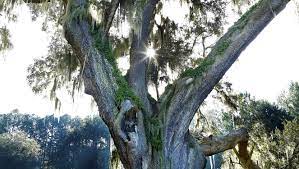Introduction
Gainesville, Florida, often referred to as “The Tree City,” is renowned for its lush greenery and abundance of trees. The city’s nickname speaks to its reputation for being one of the leafiest urban areas in the United States. About in this article Tree Service Gainseville But just how accurate is this moniker, and does Gainesville truly have a lot of trees? In this article, we will explore the history of Gainesville’s commitment to urban forestry, its dedication to preserving and expanding its tree canopy, and the benefits that trees bring to the community.
Gainesville’s Love Affair with Trees
Gainesville’s love affair with trees is deeply rooted in its history. The city’s founders, who settled in the area in the 1850s, were enchanted by the natural beauty of the region. Over time, they planted a wide variety of trees, including live oaks, magnolias, and pines, to enhance the city’s aesthetics and provide shade. This early appreciation for trees set the stage for Gainesville’s future as a city that values its tree canopy.
In 1980, Gainesville became one of the first cities in Florida to be recognized as a “Tree City USA” by the Arbor Day Foundation. This distinction is awarded to cities that meet certain criteria, including maintaining a tree board or department, having a community tree ordinance, spending at least $2 per capita on urban forestry, and celebrating Arbor Day. The Tree City USA designation highlights the city’s commitment to caring for and expanding its tree population.
The Urban Forest Master Plan
One of the key reasons why Gainesville is known for its trees is the Urban Forest Master Plan. This comprehensive plan, first adopted in 2009 and updated in 2019, outlines the city’s vision for its urban forest and provides a roadmap for tree preservation, planting, and maintenance.
The Urban Forest Master Plan sets ambitious goals, including increasing the tree canopy coverage to 35% by 2040, up from the already impressive 30% coverage at the time of the plan’s adoption. To achieve this, the city focuses on various strategies, such as planting more trees in public spaces, encouraging tree planting on private properties, and protecting existing trees.
Benefits of a Tree-Rich City
The presence of a significant number of trees in Gainesville brings with it a multitude of benefits for both residents and the environment. Here are some of the advantages:
1.Improved Air Quality:
Trees act as natural air filters, removing pollutants and carbon dioxide from the atmosphere while releasing oxygen. In Gainesville, with its abundant tree canopy, the air is cleaner and healthier for residents.
2.Enhanced Aesthetics:
The city’s lush treescape adds to its visual appeal, making it a more attractive place to live, work, and visit. The beauty of Gainesville’s streets and parks is undeniable, and the trees play a significant role in this.
3.Reduced Energy Costs:
The shade provided by trees helps cool buildings in the summer, reducing the need for air conditioning. This, in turn, lowers energy bills and makes the city more energy-efficient.
4.Wildlife Habitat:
The diverse array of trees in Gainesville provides habitat and sustenance for various wildlife species. This biodiversity enhances the local ecosystem and contributes to a balanced and thriving environment.
5.Human Health and Well-being:
Numerous studies have shown that exposure to nature and green spaces, such as those offered by Gainesville’s tree-lined streets and parks, can reduce stress and improve mental and physical health.
6.Stormwater Management:
Trees absorb rainwater and reduce the risk of flooding during heavy rains. This helps protect the city’s infrastructure and prevents property damage.
Challenges and Conservation Efforts
While Gainesville’s commitment to its trees is evident, the city also faces challenges in preserving and expanding its tree canopy. Urban development, diseases, and storms can take a toll on trees. To address these challenges, the city has implemented various conservation efforts, including:
1.Tree Protection Ordinances:
Gainesville has regulations in place to protect trees during construction and development activities. These ordinances help safeguard existing trees and ensure new ones are planted to replace any removed during construction.
2.Tree Planting Programs:
The city runs tree planting programs and encourages residents to participate in tree planting events. This proactive approach ensures that the city’s tree canopy continues to grow.
3.Tree Inventory and Assessment:
Regular assessments of the city’s trees are carried out to identify those that need care or replacement. This systematic approach helps maintain the overall health of the tree population.
Conclusion
Gainesville, Florida, indeed lives up to its reputation as “The Tree City.” With a strong commitment to urban forestry, a comprehensive master plan, and a thriving community of tree enthusiasts, Gainesville boasts a rich and diverse tree canopy. The benefits of this abundant greenery extend to residents, the environment, and the city’s overall quality of life.
While challenges exist, the city’s dedication to preserving and expanding its trees ensures that Gainesville’s nickname is well-deserved. As Gainesville continues to flourish as a haven for trees, it remains a shining example of what can be achieved when a community values and invests in its natural assets.



